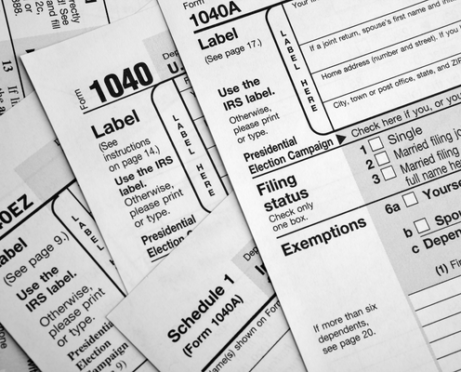
I recently taught a 90-minute webinar, 25 Financial Planning Strategies for Older Adults, for the New York Public Library (NYPL). In preparation for the program, 75 questions were submitted in advance by registered participants. The questions provide unique insights into the top financial concerns of older adults.
Though not a representative sample or empirical data, by any stretch of the imagination, the participants’ questions are instructive for financial educators and other older adults who may have the same concerns.
Below is a list of participants’ six most frequently mentioned concerns and suggested action steps from the webinar:
Taxes in Retirement
- Hold assets (e.g., stocks or mutual fund shares) for more than a year for favorable long-term capital gains rates.
- “Bunch” larger-than-normal tax deductions into one tax year to exceed the standard deduction and itemize.
- As part of bunching, consider setting up a donor-advised fund to make it beneficial to itemize deductions.
- Consider a qualified charitable distribution from a traditional IRA for a required minimum distribution (RMD) withdrawal.
- Consider tax-free bonds, instead of taxable fixed-income securities, if appropriate for your income tax bracket.
- Meet with a certified financial planner (CFP) to explore additional tax minimization strategies.
Investment Decision-Making
- Don’t invest in anything that you don’t fully understand and could explain simply to someone.
- Diversify asset classes (e.g., stocks, bonds, cash equivalents) and securities within each asset class.
- Purchase stocks, growth mutual funds, and other equity investments for goals five-plus years in the future.
- Have reasonable expectations: Average returns on stocks are about 10 percent with lower returns on bonds and cash.
- Buy low-cost investments such as index funds, exchange-traded funds, and other funds with low-expense ratios.
- Don’t overreact to daily market “noise” on news shows; stay focused on long-term investment goals.
Investment Withdrawals and Outliving Assets
- Create a retirement “paycheck” with regular withdrawals from savings and/or managed payout mutual funds.
- Consider the purchase of low-expense annuities to generate a regular monthly income (single life or couple).
- Establish a “ladder” of bonds or CDs by purchasing them in a series that pays a regular stream of interest.
- Begin RMDs from tax-deferred retirement savings at age 72.
- Get help with questions about making withdrawals and tax withholding for RMDs from account custodians. Try some online Monte Carlo calculators or meet with a CFP to analyze how long your savings will last.
Social Security Decision-Making
- Pick a starting age from 62 to 70; the longer you wait to claim Social Security, the higher your monthly benefit will be.
- Be aware of the Social Security earnings limit before full retirement age ($18,960 in 2021) if you work.
- Arrange tax withholding or make quarterly estimated payments to the IRS if your benefits are taxable.
- Take care of your spouse (e.g., higher earners work longer to assure a larger spousal benefit).
- Read all correspondence from Social Security including cost-of-living adjustments and annual benefit amounts.
Medicare and Health Insurance
- Refer to the Medicare and You publication for specific details about coverage and inflation-adjusted numbers.
- Contact your local State Health Insurance Assistance Program (SHIP) office for information about Medigap policies provided by trained volunteers.
- Stay abreast of changes in retiree health insurance (e.g., changes in insurers), if provided by a former employer.
- Budget for healthcare costs in retirement (e.g., Medicare Part B and D, copays, deductibles, co-insurance).
- Consider strategies to reduce taxable income if you are close to income breakpoints for Income-Related Monthly Adjustment Amount surcharges.
Long-Term Care Expenses
- Develop a long-term care (LTC) plan, which may include self-insurance, a continuing care retirement community (CCRC), or the purchase of LTC insurance (LTCI).
- Consider LTCI alternatives such as a life insurance policy with a chronic illness rider or a LTC rider.
- Consider low-expense annuities with accelerated payouts for a chronic illness or LTC expenses/
- Consider how much income is guaranteed for life to pay LTC bills (e.g., pension, Social Security, annuities).
- Consider the feasibility of self-insurance by multiplying the annual cost of local LTC services by three to five years.
- Consider a highly rated CCRC that will provide lifetime care.
- Get help, when needed, from SHIP counselors, a CFP, and/or an elder-care attorney.
The Bottom Line
The last third of most people’s lives is the most financially complicated.
Many major and/or unexpected events can occur including steep market declines, higher income taxes and fewer tax write-offs, loss of spousal income upon death, needs of grown children and grandchildren, rising costs of healthcare, and long-term care.
In addition, many “young-old” people age 65 to 74 have a blind spot and think that their lifestyle will stay the same when they are “old” (75 to 84) and “old-old” (85 and up).
Here is the Zoom link for my NYPL webinar, which includes a closed-captioned transcript. It will work until July 29 (30 days from the June 29 webinar).
For additional information about financial transitions in later life, consider ordering my book Flipping a Switch: Your Guide to Happiness and Financial Security in Later Life.




